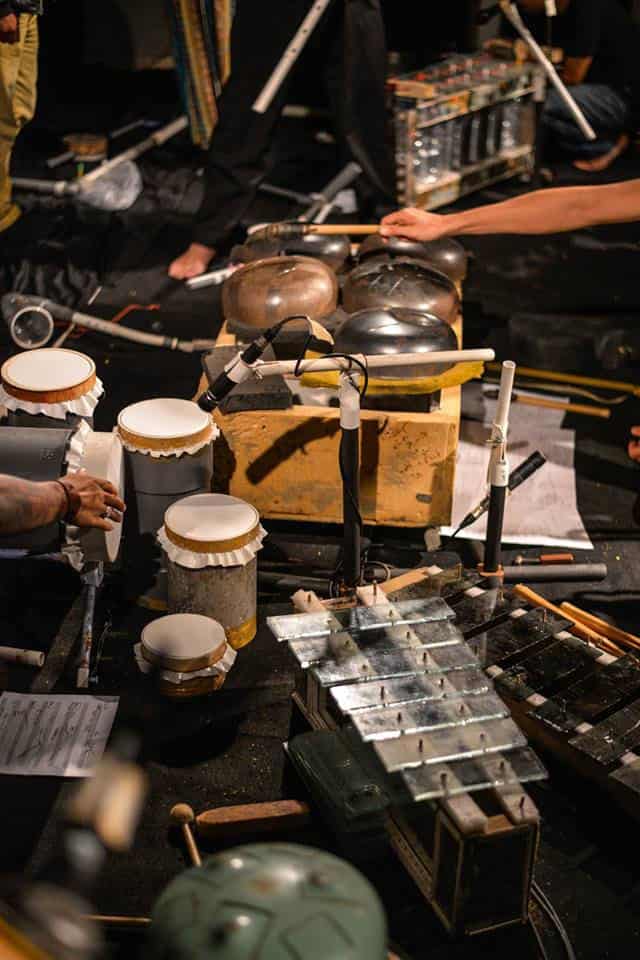I spoke to Justyna Górowska, a visual artist and performer who created the cover of the latest issue of Contemporary Lynx Magazine. She is also featured in an article written by Michał Korta, “For Your Eyes Only”, which you can find in this issue. The cover selected by Justyna is a picture taken as a part of her WetMeWild project. In this picture we are presented with female legs, and a smartphone obscuring the genital area. What we see on the cover is, however, only one part of this complex work of art. The other part can be discovered in Augmented Reality. To see it, you need to scan the magazine cover using Layar, a free app. This simple operation allows you to watch the performance of the artist who authored the piece shown on the cover. Justyna impersonates an avatar – a WetMeWild protagonist who is an unconventional combination of a woman of the future and an old Slavic water nymph. Justyna integrates numerous mediums in her works including performance, photography and new media. She has no permanent studio, where she would work on an everyday basis. Instead, she travels a lot and works in various locations. An important aspect of her artistic activity is social involvement, with a particular focus on ecology, sustainable development and feminism. For the last two years she has frequently travelled between Indonesia, Prague, New York and Poland.
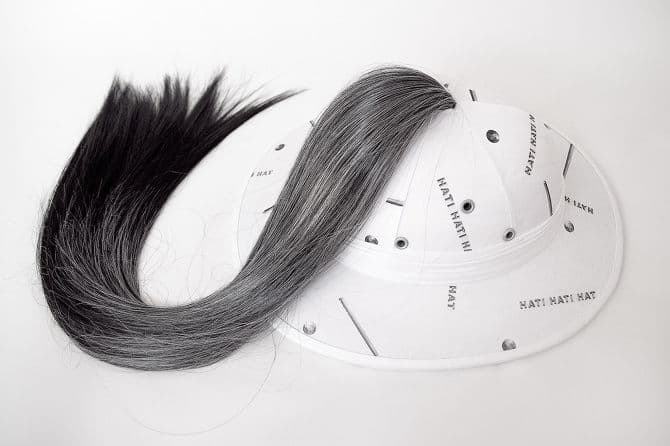
HATI HATI HAT, Justyna Górowska
Michalina Sablik: You have travelled a lot over the last two years and have participated in many artistic residency programmes during that time. Tell us how you managed to qualify for the residency programme in Indonesia.
Justyna Górowska: Two years ago I started collaborating with the Razem Pamoja Foundation (based in Krakow) and the community involved in the foundation’s activities. The ideas that this foundation represents have always been important to me, especially because it is team of people acting somewhere between art and activism. One of my early projects formed in collaboration with Adam Gruba and Bartek Ołowski was titled HATI HATI HAT (hati hati means ‘attention!’ in Indonesian). We presented it in the National Gallery in Jakarta. We were invited to work on this project mostly because along with Adam, we lived in Indonesia in the past, so we were familiar with the reality in the country.
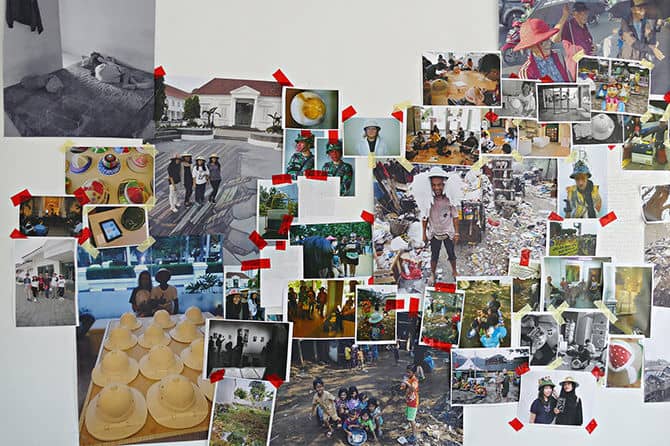
HATI HATI HAT, exhibition, Justyna Górowska
M.S.: What exactly was this project about?
J.G.: We were storing a lot of helmets in the main office of the foundation in Krakow. Bartek brought them from Vietnam some time ago. A simple idea came about to give those helmets to artists and ask them to create artworks out of this conventional headwear. The project was multidimensional, but what we strived to achieve was to critically redesign these colonial era helmets. In my opinion, postcolonialism still remains a poorly researched topic. During the time I spent in Indonesia I had some uneasy feelings about myself as the representative of Europeans, especially when I realised how deeply fascinated the local community was with white Europeans. Being confronted by omnipresent advertisements of cosmetics designed to make skin whiter was not easy either. The helmet with white hair became the symbol of the whole HATI HATI HAT project. It was supposed to show the ageing human being, but it also referred to the slogan of the Antifa movement “Goodbye white pride”. The artists created their helmet-based work, often leaving us relevant instructions. These instructions helped us animate the helmets in Indonesia. We also covered the project extensively on our blog. At the same time an exhibition was organised at the foundation venue in Krakow. This exhibition was intended to act as a “time and space capsule”. Later on, we organised an online auction to sell the helmets. The collected funds went towards the opening of the foundation’s branch in Yogyakarta in the south of the island of Java, which is the Indonesian centre of fine arts and culture.
M.S.: Do you think that white people coming to Indonesia and opening a cultural institution can be regarded as following postcolonial trends? You just said that you wanted to fight them.
J.G.: In fact, we were aware that people might see our activities in this way. White people with a certain amount of money opened a culture institution so far away from their homeland. I need to emphasise, however, that the whole idea was not completely groundless. Since we lived in Yogyakarta for a year (2012/2013), we already had many friends in the city. They were artists, theoreticians and activists. The space which we created was supposed to become not only a meeting place for the local women or youth, but also a gift for local artistic circles. We started to invite local groups who wanted and seemed able to serve the local community and assisted in the process of establishing new ones. The name of our branch is SESAMA, which in Indonesian means ‘equal’ and ‘mutual’. The word is normally used while talking about a group and the relationships among its members.

Selfie frame, Justyna Górowska
M.S.: You also produced a project titled, “Selfie Frame”, which refers to issues and challenges women face in their lives. Did you also work on it during your stay in Indonesia?
J.G.: Yes, I did. This project took the popularity of selfies and the idea of selfie-feminism as its starting point. According to this theory, selfies help women regain their right to create their own image. On the other hand, when they expose their beauty and naked bodies, they go along with stereotypical ideas of womanhood being born out of patriarchy and reflecting the male perspective. I was constantly thinking about how I could successfully translate this discussion to the everyday reality of Indonesia without communicating the sexual aspect of selfie feminism. It was also challenging to present the story behind the project because feminist organisations are not particularly active in Indonesia and the status of women in Indonesian society is generally much lower than in Europe. I was really upset by the fact that most of the participants of the workshops organised at SESAMA were men. Our events did not attract huge female audience. Therefore, the “Selfie Frame” project was presented as a response to low participation ratios of women in art and social life. One factor likely to contribute to the project’s success was Indonesians’ fascination with social media. Did you know that selfie stick was invented in Indonesia? This was a collective project, created in collaboration with Irene Agrivine and Marta Węglińska.

Selfie frame, Justyna Górowska
M.S.: Is it true that the frames used in the “Selfie Frame” project were closely related to Javanese tradition?
J.G.: Indeed, the frames which were supposed to enhance the selfies were created using traditional methods and techniques. In local culture, similar decorations are placed on the branch of a bamboo tree to celebrate someone’s wedding, the birth of a baby or another important occasion. We managed to find a person who knew how to prepare such ornamental designs. This craft is handed down from generation to generation but can only be applied in practice by persons performing ritually vital functions in a given community. We also created an unconventional selfie stick made of bamboo and engraved quotations by famous Indonesian female figures onto bamboo leaves, which we then attached to the decorative frames.
M.S.: Have you worked on any other projects while in Indonesia?
J.G.: “Selfie Frame” was my only project. The rest of the time I spent as an animator and manager of the venue. I found it crucial to establish friendly relationships with the inhabitants of the village. They are very collective-oriented, so everything needed to be consulted beforehand. Therefore we visited our neighbours, invited others to us. We had to be careful about what we were wearing, especially as women, so that we did not offend anyone. We also organised a residency exchange programme, thanks to which artists from Poland were able to visit us at SESAMA. Agnieszka Brzeżańska, Przemek Branas, Łukasz Roth and some others became our guests at that time. Indonesian artists who took part in this exchange, namely Iwan Wijono and Dadi Setiyadi, were hosted by the foundation in Krakow.

Justyna Górowska
M.S.: Your projects tend towards activism…
J.G.: In general, my works have always been socially-engaged. Just to give an example, my diploma project entitled “Orang Pendek” was strictly connected to posthumanist theories, especially in the way it presented the ethical aspects of relationships between humans and other living creatures. Other early works which prove my inclination towards social engagement include a video performance with dogs titled “Iris and Reks”, a soft porn material challenging an interspecific taboo. I also created a reconstruction of her skeleton with a peacock feather instead of the head. This object served as a kind of commentary on how much we care about the aesthetics of our meals but, at the same time, forget where our food comes from.
M.S.: The “WetMeWild” project which you conceived in New York is another manifestation of your ecological activism.
J.G.: It is indeed. However, I would like to mention that earlier on, at SESAMA, we started a programme relating to plastic waste. We introduced recycling initiatives in our neighbourhood and tried to use waste in our artistic activities. For example, we organised a Limbah Berbunyi concert during which music was played on traditional Javanese instruments made of waste material. At that time, I started thinking about water contamination from plastic and about the privatisation of clean water sources. In many places worldwide, water is distributed in bottles by large corporations, such as Danone, who are pursuing this business in Indonesia. Europeans do not realise how lucky they are to have almost unlimited access to high-quality tap water. Not many of them understand that access to water is no longer a fundamental human right and that water became just another commodity for which people have to pay.
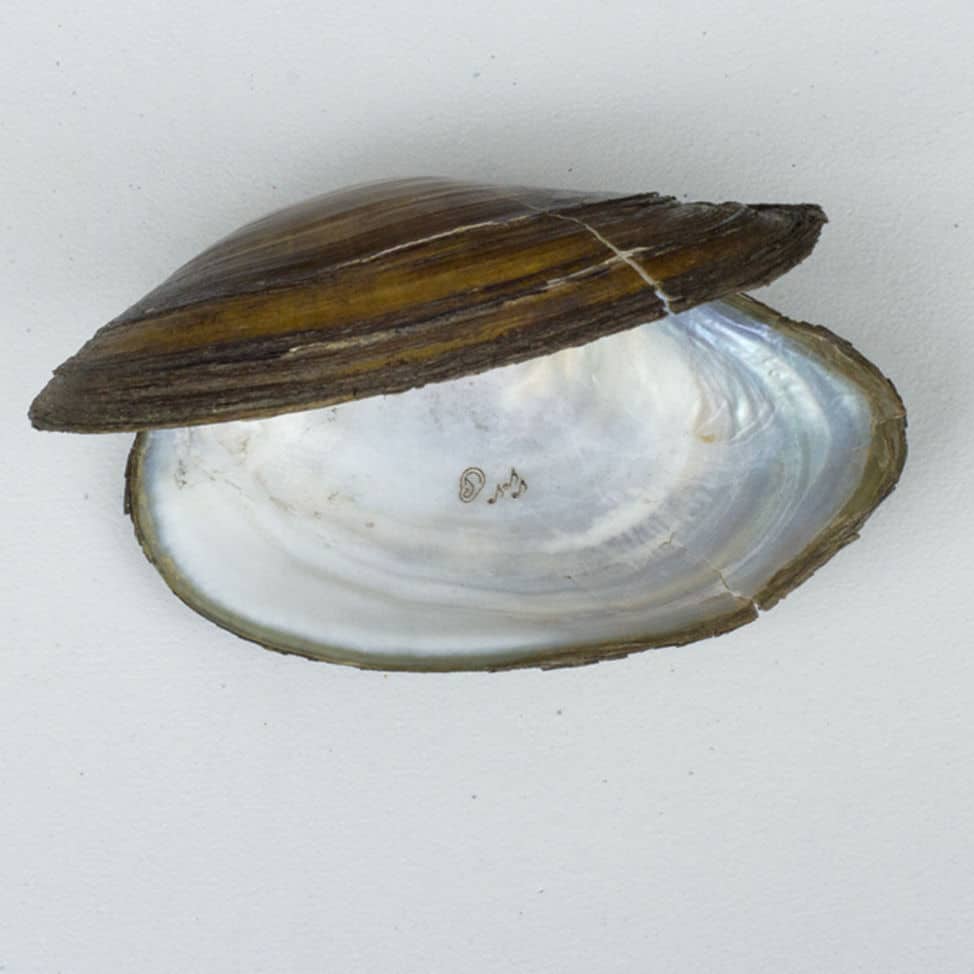
Mussel, Justyna Górowska
M.S.: The topics you discuss could well become subjects of extensive social campaigns. Nevertheless, your works are very symbolic and multidimensional. For example, we watch you as a mythological water creature.
J.G.: The aquatic ecology campaign is based on my impersonation of a water nymph. I became interested in mythological water creatures when I was working on my ŁUSKA [Scale] performance, which I showed in Quebec City, and afterwards in Warsaw during the vernissage “Syrena herbem twym zwodnicza” (2017), organised for the opening of the new building of Museum of Modern Art in Warsaw. During that performance, I tightly pressed ink cartridges against my naked body to create an unconventional open artwork, which made my skin look as if it were covered with fish scales. Afterwards, I got into old Slavic stories about water nymphs living in rivers. I have always liked listening to such stories because they are typical matriarchal myths featuring powerful female characters.
![ŁUSKA [Scale] performance, Justyna Górowska](http://contemporarylynx.co.uk//wp-content/uploads/2018/10/Luska-Justyna-Górowska.jpg)
ŁUSKA [Scale] performance, Justyna Górowska
M.S.: What is the true meaning of the “WetMeWild” title which you chose for the project that was conceived during your residence stay at Art in General in New York?
J.G.: It is the name of the character I played. I became an incarnation of this mythological character, I acted as her, but at the same time, I remained a person who created content relating to the global water crisis. This content was not always straightforward and obvious, however. I strived to combine modern times with tradition, talk about sex-positive feminism and efforts towards the protection of water resources.

WetMeWild, Justyna Górowska
M.S.: Your project was presented through various channels – an Augmented Reality application, Instagram, video, performance…
J.G.: The WetMeWild project was mostly presented at selected metro stations in New York, especially the Spring station. I selected metro stations as the venues for my project because there I could expect the largest possible audience. The streams of people passing through such stations are virtually infinite. We should also remember that many of the metro tunnels are in fact drained underground water stream channels. I presented my mini-performances dressed in a specific way, with my calves covered in FOLLOW ME WetMeWild temporary tattoos. Aside from that, I placed interactive AR stickers at these stations, which could be scanned with a phone in order to access additional information. I started to work with augmented reality because this technology is easily accessible and almost every smartphone is equipped with it by default.

‘WetMeWild’, sticker, Justyna Górowska
M.S.: How did you use the Layar App?
J.G.: I acted like a hacker and aside from the AR stickers I created, I infiltrated the SPRING station sign. I took a picture of the sign and added an interactive link to it through the website controlling the Layar App. Thanks to this, once you scanned the sign, you were sent a link to my Instagram profile on your mobile phone screen. I want to go even further and link the station sign to a video performance about drinking water contamination with microplastics.

Justyna Górowska, AR manual
M.S.: Recently you have organised many performances relating to the project we have just discussed.
J.G.: Indeed, I recently presented a performance on the same topic during Warsaw Gallery Weekend at lokal_30. Earlier this year, in May, in the Finnish houses at the Jazdów settlement in Warsaw, I presented a very classic performance. I was dressed in white with a cap on my head on which one could read the slogan “STOP DRINKING BOTTLED WATER”. I just made some slow movements and paid attention to eye contact to establish a relationship with my audience. Later on, I told them a story about water through my own choreography. I said some words aloud describing water movements, e.g. humming, rustling, quivering. These words in Polish uttered one after another sounded like a water stream, which added value to the whole image. At the very end I showed, “Swipe On Touch Screen”, a performance where I presented pictures of water saved in my phone gallery while holding the phone near my vagina.

‘Clit Swipe’, Justyna Górowska
M.S.: There must have been many obvious erotic aspects to it!
J.G.: This is how I work. This way, I created a collage made of symbols and reflections. I avoid literality in everything I do.
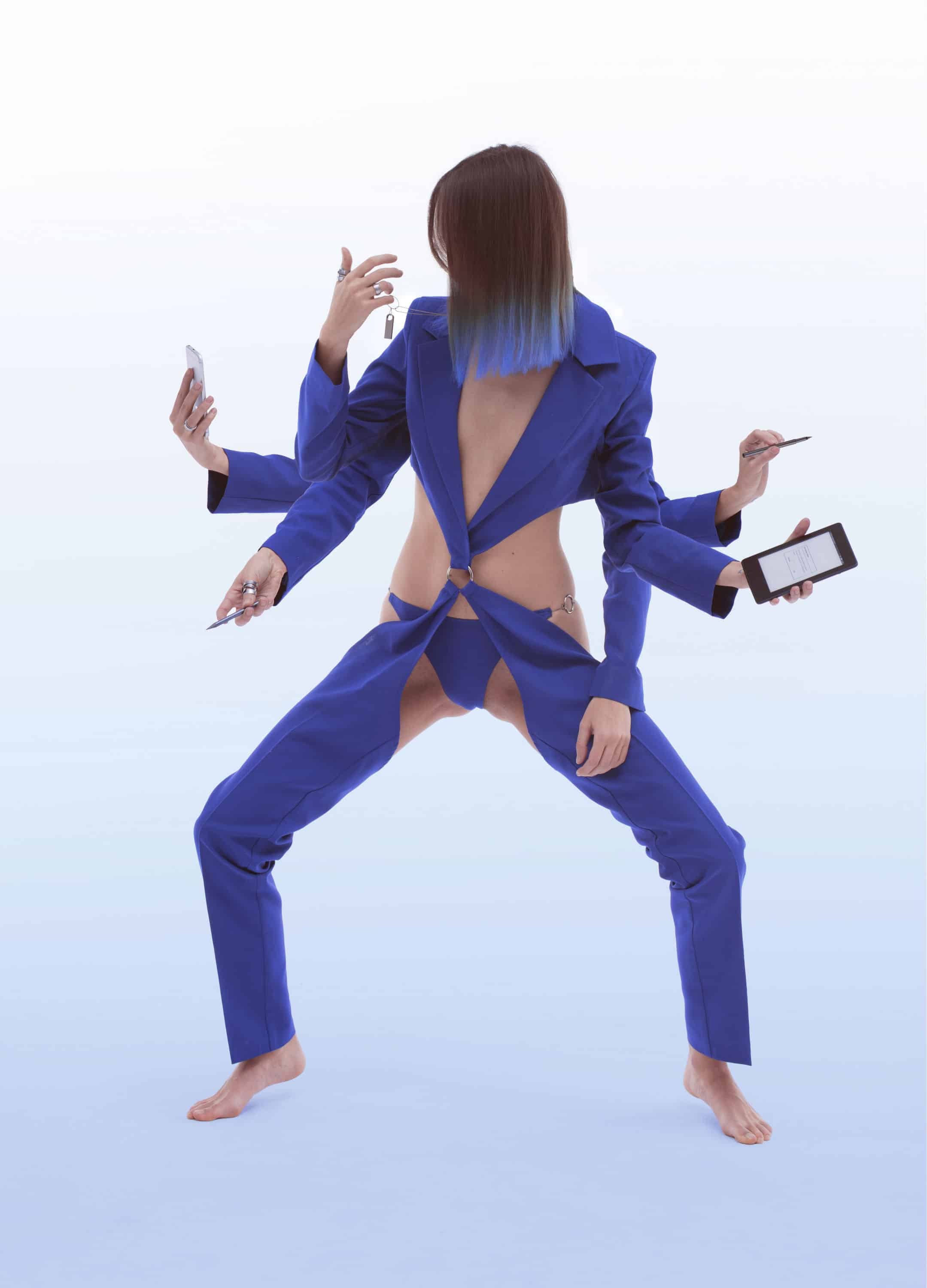
Corpo Shiva, ‘WetMeWild’ in cooperation with Rolke, Justyna Górowska

![ŁUSKA [Scale] performance, Justyna Górowska](https://static.contemporarylynx.co.uk/wp-content/uploads/2018/10/Luska-Justyna-Górowska.jpg)

